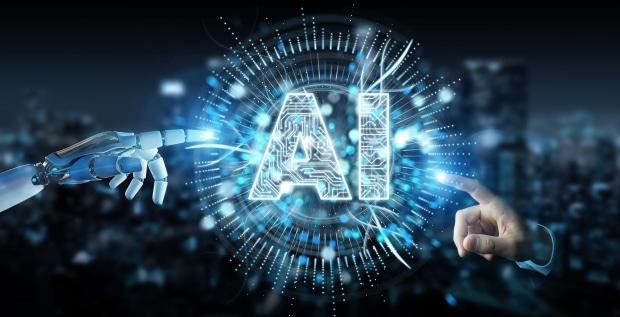Understanding AI : What You Need To Know
If you have adolescent or young adult children, you’ve likely heard about AI and its impact on modern society. But what artificial intelligence is everyone talking about, and how do businesses and the public use it?
Keep reading to learn more about AI and how you can help your kids navigate this new—and exciting—landscape!
What is AI?
AI, or artificial intelligence, is a branch of computer science that creates systems capable of performing tasks that typically require human intervention. AI-enabled tasks include recognizing patterns and solving complex problems related to language.
AI can be broadly categorized into two types: narrow AI, designed to perform specific tasks such as voice recognition, and general AI, which can perform any intellectual task that a human being can.
The basis of AI is machine learning—the ability of computer systems to learn and improve from experience without being explicitly programmed to do so. More advanced is deep learning, a subset of machine learning that uses artificial neural networks with many layers (hence the term “deep”) to model and understand complex patterns.
AI is becoming increasingly prevalent in today’s world. In 2022 alone, 35% of organizations reported using AI, and that number is only expected to climb in the coming years. It’s often seen in applications like digital assistants, recommendation systems, and autonomous vehicles.
This technology has also demonstrated significant potential in fields like:
- Healthcare, where it can aid in diagnosis and treatment
- Climate change, where it can model and predict future climatic scenarios
AI Applications
AI is revolutionizing a growing number of fields. It’s transforming businesses’ operations and improving how regular people go about their daily lives. The following are some of the most common types of AI in use today.
Virtual Assistants
Virtual assistants like Amazon’s Alexa, Google Assistant, and Apple’s Siri are AI-powered tools that can answer questions, play music, and much more. They utilize AI technologies such as natural language processing and speech recognition to interact with users in a natural, human-like way.
Navigation
Apps such as Google Maps use AI to provide traffic updates, suggest the fastest routes, and predict traffic conditions based on historical data. They use machine learning to analyze vast amounts of data from various sources to provide accurate and personalized navigation assistance.
Social Media
AI can also be used in social media. This technology is currently being used to personalize content and filter spam. Some of the most advanced tools can detect inappropriate content and prevent users from seeing things they don’t want to. AI also helps in targeted advertising, ensuring users receive ads most relevant to their interests and behavior.
Recommendation Systems
Platforms like Netflix and Spotify use recommendation systems to personalize content and product suggestions based on a user’s past behavior. These systems leverage advanced algorithms to analyze user data and predict what users might enjoy the most.
The Pros and Cons of AI
While artificial intelligence has improved life for many, it’s not without its drawbacks. Parents and educators need to understand how this technology impacts young people’s lives and how to ensure it’s being used appropriately.
Pros
- Efficiency and Productivity: AI quickly performs repetitive, mundane tasks, reducing human error and enhancing productivity. For example, in industries like manufacturing, AI-powered robots can work round the clock to produce a steady output that far surpasses human abilities.
- Data Analysis: AI can analyze vast amounts of data and derive meaningful insights. This feature is especially valuable in the business world. Users can use data-driven models to inform decision-making rather than rely on guesswork.
- Personalization: One of AI’s main draws is its ability to personalize many user experiences. Recommendation algorithms on platforms like Netflix carefully monitor user behavior to suggest movies or products that match their tastes.
- Prediction: AI can identify patterns and make predictions based on past data. This comes in handy in several industries—for instance, those working with climate can use AI to generate accurate weather forecasts and climate patterns.
- Accessibility: This technology can potentially improve accessibility for individuals with disabilities. Voice-activated assistants can help visually impaired individuals navigate the web, and AI-powered prosthetic limbs can mimic the functionality of natural ones.
Cons
- Job Displacement: One of the biggest concerns around AI is its potential to replace human labor. Jobs that involve repetitive tasks are particularly vulnerable to being taken over by artificial intelligence. While new roles are likely to be created by the AI revolution, whether these new jobs will keep pace with job losses is still being determined.
- Privacy Risks: AI systems rely on vast amounts of data, raising concerns about user privacy. Those that use AI-powered tools are thus advised to exercise caution when feeding systems their personal information.
- Ethical Considerations: Decisions made by AI may lack transparency, leading to what’s often referred to as the “black box” problem. This lack of transparency can result in many ethical dilemmas, particularly in areas like healthcare or autonomous vehicles, where decisions around AI can have serious consequences.
- Dependence on Technology: As AI becomes more prevalent in everyday life, the risk of over-reliance on technology grows. This dependence could threaten numerous aspects of society if these systems fail or be exploited through cyberattacks.
- Bias: AI tools learn from the data they’re trained on, so they can perpetuate bias, as demonstrated in the hiring process. For instance, if an ill-trained AI model is used to scan resumes, it may boost or eliminate candidates based on discriminatory criteria.
Become Intelligent about Artificial Intelligence to Get the Most Out of the Modern Tech Landscape
Whether used for good or bad, there’s no doubt that AI is here to stay. Just as schools and workplaces are adapting, parents and stepparents are faced with the task of introducing age-appropriate AI to their children to keep them tech-literate in today’s day and age.
By understanding AI, you can help your child handle the ups and downs of this new technology. This can prepare them to excel in education and their future career. Here’s how to tackle your child’s technological habits.






